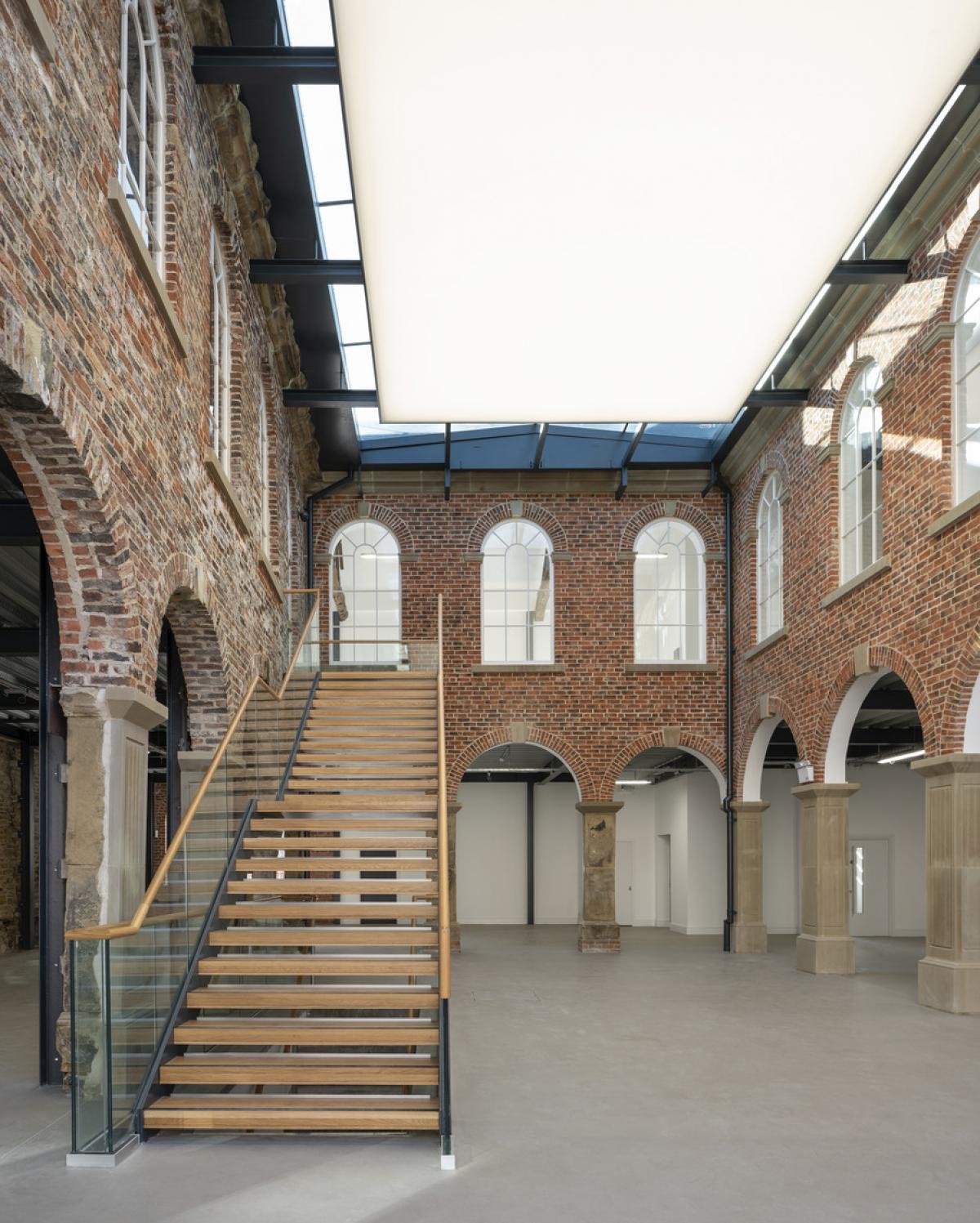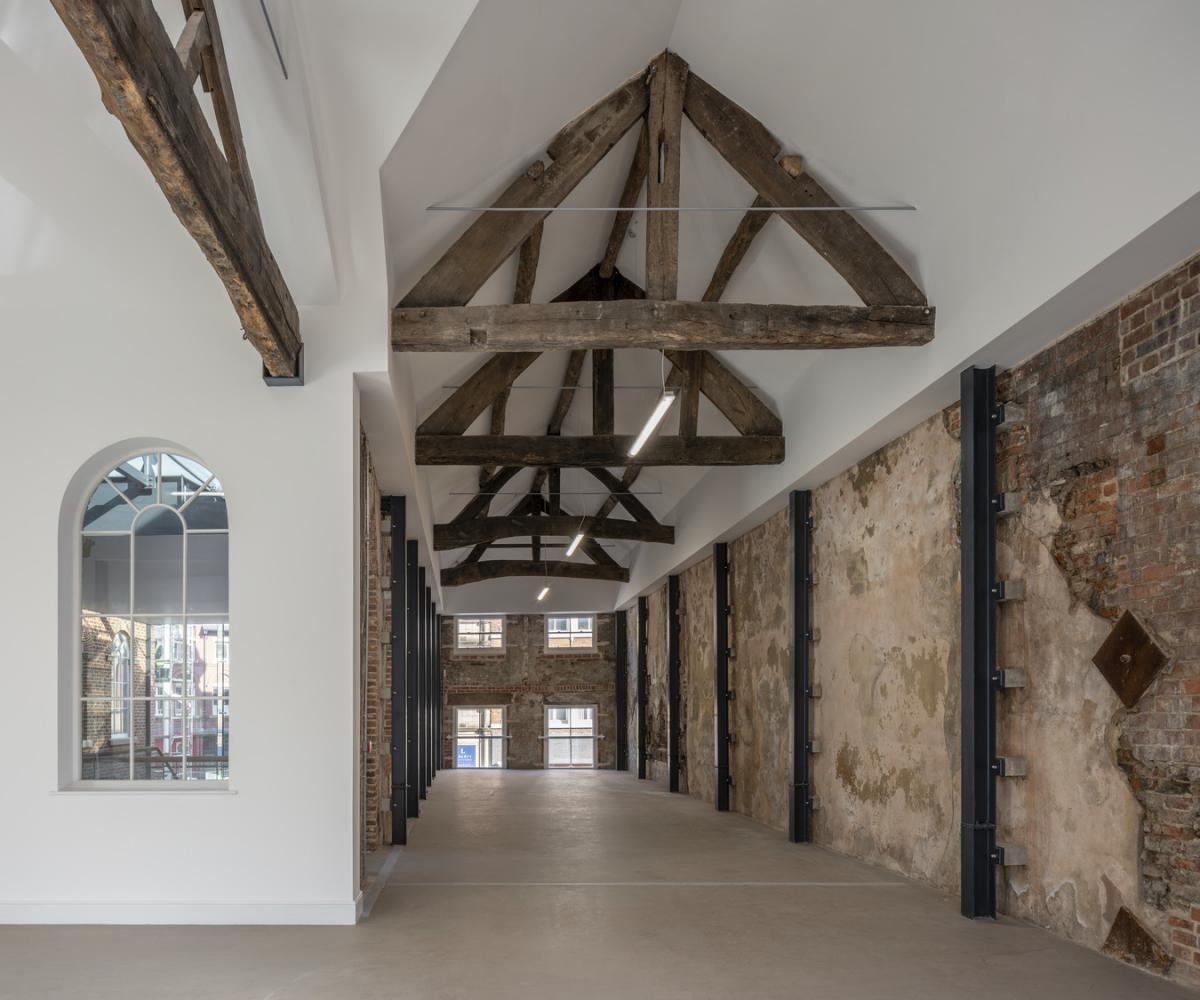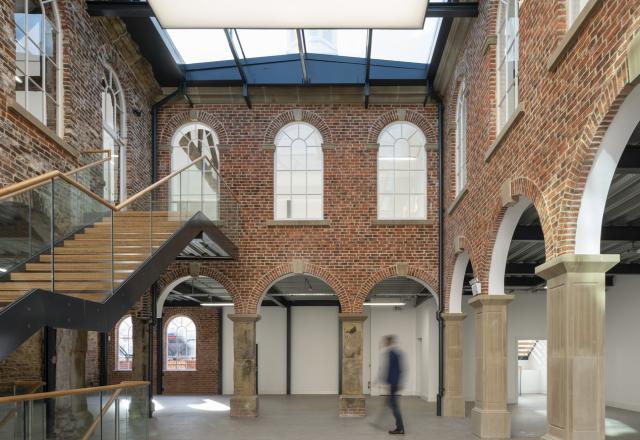
After more than 20 years on Historic England’s At Risk Register, Leeds’ First White Cloth Hall has been removed from the list, following an extensive programme of restoration and rebuilding.
Based on Kirkgate, Leeds’ oldest street, the First White Cloth Hall was built in 1711 for the sale of undyed cloth. In 1758 it was replaced by the Second White Cloth Hall on Meadow Lane. Over the years the building was used for many purposes, but by the 1980s it was largely vacant. Completely disused by 2010, it fell into poor condition.
Our proposals have seen the building undergo extensive restoration and repair in keeping with its original construction. Where possible, the original materials have been reused and reinstated in their previous positions (as far as is known).
The restoration of the building has also included a rebuild of the building's demolished West Wing and northern elevation, as well as the re-creation of the single, undivided assembly room space. A lightweight structure encloses the central courtyard to reveal the building's historic form, whilst a contemporary structure on the southern elevation provides a new physical and visual link to Leeds' Corn Exchange.
Associate, Grant Prescott, said: “The restoration has secured a new future for this incredibly important part of Leeds’ history. We are incredibly proud to have worked with developers, Rushbond, to bring the First White Cloth Hall back from the brink of disrepair and we look forward to seeing it become part of life in Leeds once again.”
The project has been funded by Historic England, National Lottery Heritage Fund and Leeds City Council.

